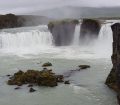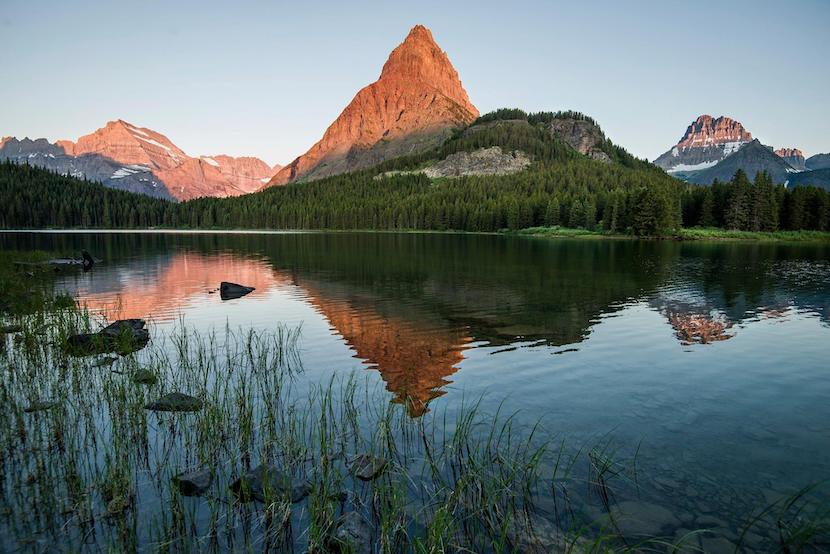Known as the “Crown of the Continent,” Glacier National Park covers more than 1 million acres of northwestern Montana along the United States border with Canada. Named after its many glaciers and the glacial forces that carved its scenic topography, the park includes parts of two mountain ranges, more than 130 lakes, and contains several plant and animal species that have nearly remained untouched since European settlers arrived in North America.
Although Glacier National Park was created as a national park on May 11, 1910, its formation began approximately 170 million years ago. Shifting tectonic plates which resulted in the creation of the Rocky Mountains contributed to the park’s geology. Today, the park is home to three mountain ranges: the Clark Range, Lewis Range, and the Livingston Range.
Erosion and glaciers shaped the park’s valleys and present-day lakes and moraines. In the 1850s, there were an estimated 150 glaciers in the park. Today, there are 25 with the largest being Blackfoot Glacier.

Glacier National Park is also home to the 8,025-tall Triple Divide Peak, which sits on North America’s hydrological apex. Water flowing from the mountain’s summit can go either into the Pacific, Atlantic, or Arctic oceans.
Glacier National Park contains more than 700 lakes with only 131 having names. The largest is the 9-mile long Lake McDonald which reaches depths of 464 feet and covers nearly 7,000 acres. The park’s lakes are renowned for their clarity. This is a result of minimal plankton growth due to the water temperature rarely going over 50°F at the surface.
There are also approximately 200 waterfalls located throughout the park with the tallest, Bird Woman Falls, topping out at 560 feet.
Glacier National Park contains several ecosystems ranging from tundra to prairie which offers visitors exceptional wildlife viewing opportunities.
Nearly all of the plants and animals which existed at the time European explorers first entered the region are still present in the park today.

Glacier National Park is home to moose, mountain lions, wolves, grizzly and black bears, mountain goats and the rare Canadian lynx and wolverine. There are also nearly 300 species of birds, including golden eagles.
More than 1,100 plant species have been identified in the park’s predominantly coniferous forest. Cottonwood and aspen are the most commonly found deciduous trees along the lower elevation lakes and streams.
More than 2 million visitors pass through Glacier National Park each year with one of the most favorite activities being a drive on Going-to-the-Sun Road. This 50-mile winding road connects the west and east sides of the park and provides scenic vistas of glaciers, mountains, lakes, and waterfalls.
Hikers have access to more than 700 miles of trails and 13 different campgrounds with a total of 1,000 campsites. Popular trails include the 11.4-mile Highline Trail which parallels the Garden Wall, the 10.3-mile Grinnell Glacier Trail, and the 17.9-mile Pitamakan Pass trail.

Visitors need to remember that Glacier National Park is bear country. Both the black and grizzly bear have called this area their home for centuries. Visitors are cautioned to always carry bear spray, even on short hikes.
Archaeologists believe Native Americans first arrived in the area more than 10,000 years ago as the Ice Age glaciers began their retreat. The Blackfeet arrived in the park’s eastern regions in the early 1700s, and they still have a reservation that borders the park to the east. The Flathead moved into the western area and currently have a reservation located southwest of the park.
The Blackfeet consider Chief Mountain and the other surrounding mountains to be “Backbone of the World.”




